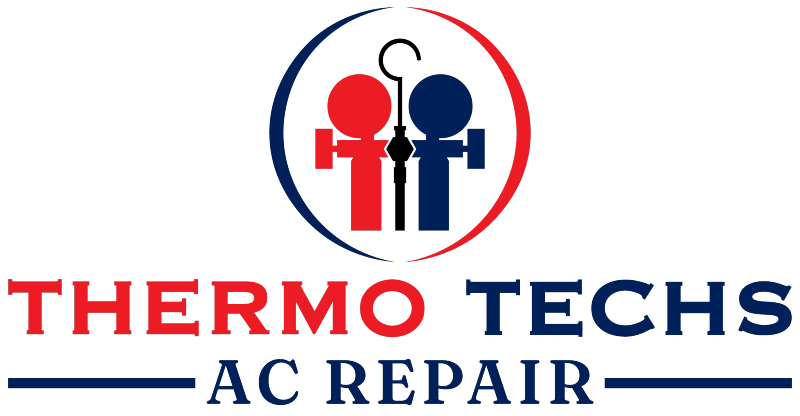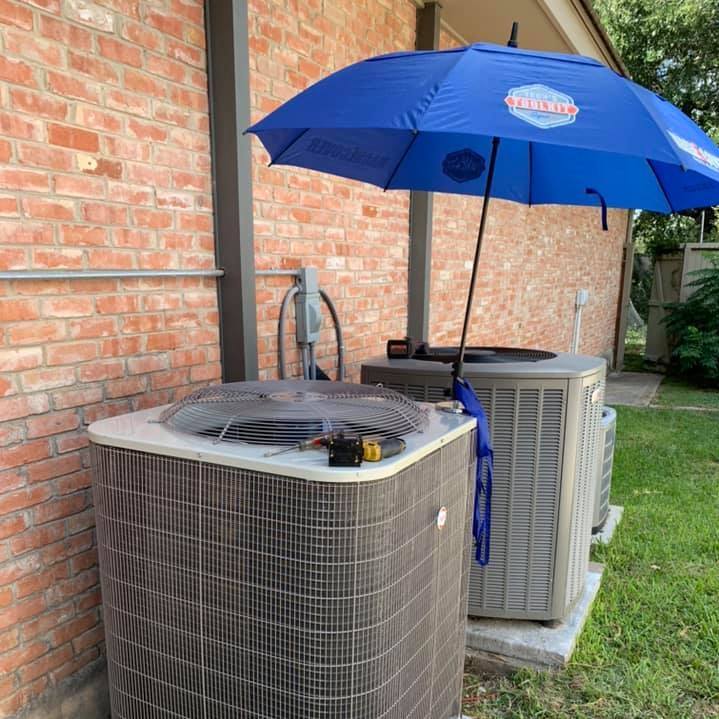Here in San Antonio, having a central air conditioner is critical to keeping your home feeling as comfortable as possible. If you’re looking for an AC installation service, we can help you choose the new system your home deserves. However, if you have ever wondered about how exactly a central air conditioner works, we cover the different components that come together to make your unit operate as smoothly as possible.
Depending on the type of system you have, the unit can have unique characteristics. Heat pumps and mini-split systems will look drastically different from each other than your traditional central air conditioning unit. However, the basic function behind these different types of air conditioners remains the same — keeping your home comfortable.
The Basics of Your Central Air System
Before you start diving into the intricacies of your AC unit, having a firm grasp on the basics can help you understand the more complex parts of the system later. While an AC system’s inner workings can vary based on the manufacturer, more than a few common factors go into each central air system.
Does Size of the Unit Matter?
The size of every home is different and has unique dimensions that affect how big your HVAC system should be. Smaller homes need smaller units and vice versa. However, while the size of your home’s heating and cooling system may change, it doesn’t affect the base components that make up your energy-efficient central air conditioner unit. Having a better understanding of these components will help you more than having a list of SEER ratings in front of you. You’ll have a basic understanding of how these parts work together to keep your home cool.
When looking at a central air conditioning system, you will notice four key components. Those components are the condensing unit, evaporator coil, circulation blower fan, and thermostat. But what do those components do? How do they play a part in cooling a home? Let’s take a look at the key components of your central AC system and discover how they work.
Key Component 1: The Condensing Unit
The condensing unit is the large metal box sitting outside your home. If you cut the condensing unit in half, you would find the condenser coils, the compressor, and the condenser fan motor. The compressor is like a pump, compressing refrigerant until it turns into a gas and enters the condenser coils. Inside the condenser coils, the gas is condensed into a hot liquid.
The condenser coils dissipate the heat as the liquid travels through them. The condenser fan is used to assist the coils in this process. Once the refrigerant has passed through the condenser coils, it travels to the evaporator coils.
Key Component 2: The Evaporator Coils
Located inside the home, the evaporator coils are typically mounted on top of the furnace. They use the furnace’s central air ducts as a central component of their functions. Remember, the refrigerant from the condensing unit is now a cooled-off liquid, and it has approached the evaporator coils. Once the liquid enters the evaporator coil, it expands into the form of a gas.
The refrigerant gas makes the evaporator coils cold. Then, the refrigerant gas flows into a suction line attached to the compressor, which is back in the condensing unit, where it will repeat the process. Now that the evaporator coils are cold, it is ready to cool the air blowing past them by the circulation blower fan.
Key Component 3: The Blower Motor (Fan)
Inside the furnace, the circulation blower fan is simply a fan that blows air. Its role in your AC unit revolves around dispersing the cool air into your home’s ductwork and spreading it evenly throughout your home.
- First, the circulation blower fan draws air in through the return vent.
- Second, it blows air past the cold evaporator coils.
- Third, it continues blowing the now cooled air through the home’s venting ducts.
- Finally, the air circulates in the room and is drawn back through the return vent.
This process continues until the room temperature matches the temperature set on the thermostat.
Key Component 4: The Thermostat
The thermostat controls the temperature in a central location in the home and at eye level. It has a sensor that measures the temperature of the house. The homeowner sets the preferred room temperature on the thermostat. The sensor in the thermostat determines if the current room temperature is above or below the set temperature. When the room is warmer than the set temperature, the thermostat sends a signal to the condensing unit to cool the air in the room.
Once the house is cool enough, the thermostat sends another signal to the condensing unit to power off and stop cooling the air. The thermostat continues to sense the air temperature, turning the condensing unit on and off as often as needed to maintain the set temperature.
Knowledge is Power
With the knowledge of how a central air conditioner works, you have a baseline understanding of what to look for when something feels off about it. If you notice issues with the unit, you can call the professionals to take a look at it. You can also feel free to share your new information with your friends and neighbors at barbecues, the lake, a sporting game, or wherever this summer takes you.
Got an Issue? Call the San Antonio AC Experts Today!
Now that you know the basics of your home’s air conditioning system, you may want to consider getting it inspected by the best in the business. Our team can help take a closer look at the inner workings of your unit and ensure it’s performing at its best.
If you or someone you know wants to learn more about the inner workings of your central air conditioner, feel free to contact us. We would love to help familiarize you or your friends with central air conditioning systems and how they might improve your home’s comfort level. If your air conditioner is not working properly, please give our team a call, or request your appointment online. We’re here to help keep you and your family cool!




